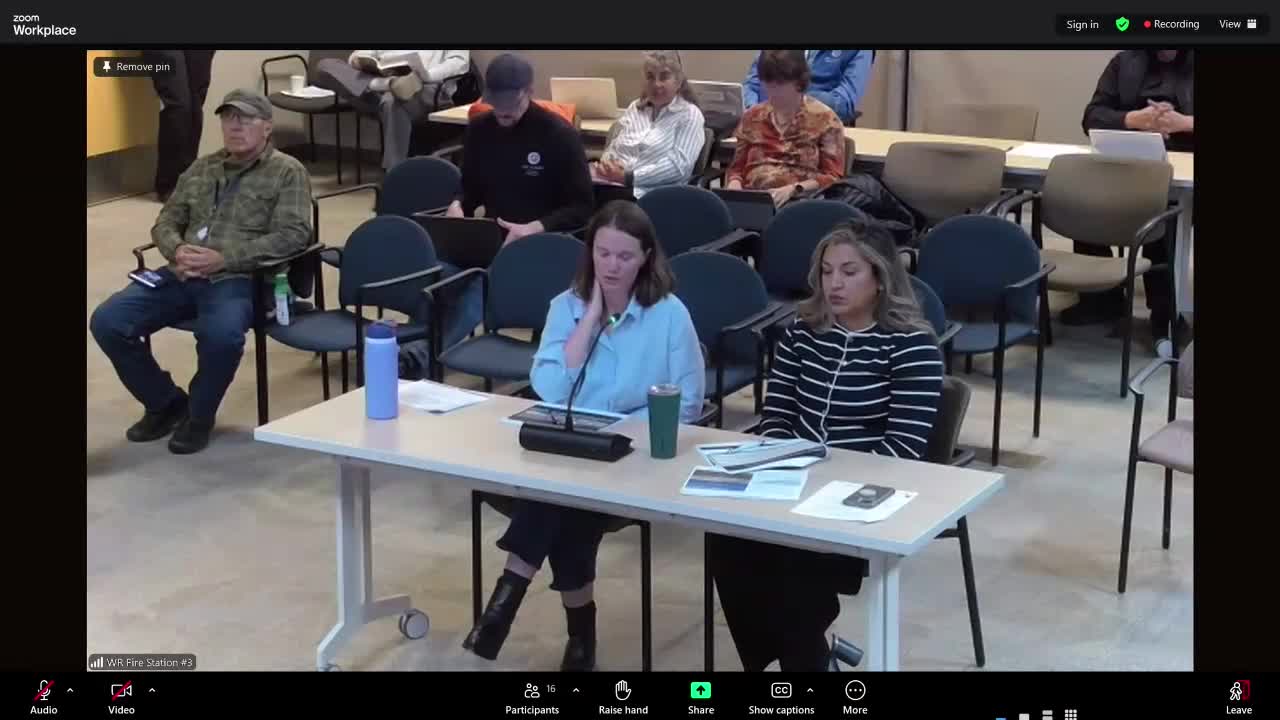County receives fleet‑conversion and EV‑charging plan updates; staff report progress on climate actions
October 21, 2025 | Los Alamos, New Mexico
This article was created by AI summarizing key points discussed. AI makes mistakes, so for full details and context, please refer to the video of the full meeting. Please report any errors so we can fix them. Report an error »

Consultants from Stantec and county staff updated County Council on Oct. 21 about two linked efforts: a fleet‑conversion plan to reduce greenhouse‑gas emissions from county vehicles and a community‑wide electric‑vehicle charging plan intended to increase public charging access.
Stantec said it has completed a fleet‑inventory and operational assessment, produced a dynamic Power BI dashboard for county fleet planning, and recommended a phased vehicle replacement schedule tied to market availability, operational needs and electrical infrastructure. The plan recommends site‑level power assessments and a phased implementation strategy (phase 1–3) for vehicle replacements and chargers. The consultants said the dashboard will be used to track replacements, infrastructure needs and greenhouse‑gas impacts over time.
On EV charging, the team described four scenarios that inform siting: home charging (where zoning and dwelling types indicate overnight charging locations), county‑owned chargers, shared Level‑2 charging on private property (multifamily and commercial), and DC fast charging for travel corridors and high‑use commercial sites. Public engagement for the EV plan included an in‑person visioning meeting and an online survey that drew more than 500 responses. The consultants combined those responses with technical data layers — feeder capacity, land‑use suitability and flood/exclusion areas — to map a prioritized set of candidate locations and to estimate grid impacts under low/medium/high adoption cases.
County sustainability staff also briefed council on related climate‑action efforts. Highlights included: construction of 12 Level‑2 chargers at the municipal building (expected complete by Dec. 31, 2025) and a secured NMDOT grant for two DC fast chargers at Mesa Public Library; DPU plans for a Foxtail Flats solar (170 megawatts) and battery‑storage (80 megawatts) project to increase daytime renewable supply; and a timeline for zero‑emission buses, with arrival of electric buses to Atomic City Transit projected for November 2026. Staff said Fire Station 4 is being designed as all‑electric in line with the climate action plan and that an internal working group has defined metrics for the first year of implementation.
Councilors and members of the public asked about the county’s role versus private‑sector charging, how to account for LANL commuter demand (the consultants said LANL manages its own large charging footprint and was not included in this county plan), and the costs developers face when electrifying subdivisions. A developer noted that per‑lot distribution and service costs rise when houses are built to higher electrical capacity, and he urged coordination between planning, DPU and private developers to manage cost and housing‑affordability tradeoffs.
Next steps: the consultants will finalize the draft plans, integrate community feedback, present updates to the Environmental Sustainability Board and the Board of Public Utilities, and return to council with a final EV‑charging plan and a fleet‑conversion implementation schedule.
Stantec said it has completed a fleet‑inventory and operational assessment, produced a dynamic Power BI dashboard for county fleet planning, and recommended a phased vehicle replacement schedule tied to market availability, operational needs and electrical infrastructure. The plan recommends site‑level power assessments and a phased implementation strategy (phase 1–3) for vehicle replacements and chargers. The consultants said the dashboard will be used to track replacements, infrastructure needs and greenhouse‑gas impacts over time.
On EV charging, the team described four scenarios that inform siting: home charging (where zoning and dwelling types indicate overnight charging locations), county‑owned chargers, shared Level‑2 charging on private property (multifamily and commercial), and DC fast charging for travel corridors and high‑use commercial sites. Public engagement for the EV plan included an in‑person visioning meeting and an online survey that drew more than 500 responses. The consultants combined those responses with technical data layers — feeder capacity, land‑use suitability and flood/exclusion areas — to map a prioritized set of candidate locations and to estimate grid impacts under low/medium/high adoption cases.
County sustainability staff also briefed council on related climate‑action efforts. Highlights included: construction of 12 Level‑2 chargers at the municipal building (expected complete by Dec. 31, 2025) and a secured NMDOT grant for two DC fast chargers at Mesa Public Library; DPU plans for a Foxtail Flats solar (170 megawatts) and battery‑storage (80 megawatts) project to increase daytime renewable supply; and a timeline for zero‑emission buses, with arrival of electric buses to Atomic City Transit projected for November 2026. Staff said Fire Station 4 is being designed as all‑electric in line with the climate action plan and that an internal working group has defined metrics for the first year of implementation.
Councilors and members of the public asked about the county’s role versus private‑sector charging, how to account for LANL commuter demand (the consultants said LANL manages its own large charging footprint and was not included in this county plan), and the costs developers face when electrifying subdivisions. A developer noted that per‑lot distribution and service costs rise when houses are built to higher electrical capacity, and he urged coordination between planning, DPU and private developers to manage cost and housing‑affordability tradeoffs.
Next steps: the consultants will finalize the draft plans, integrate community feedback, present updates to the Environmental Sustainability Board and the Board of Public Utilities, and return to council with a final EV‑charging plan and a fleet‑conversion implementation schedule.
View full meeting
This article is based on a recent meeting—watch the full video and explore the complete transcript for deeper insights into the discussion.
View full meeting
